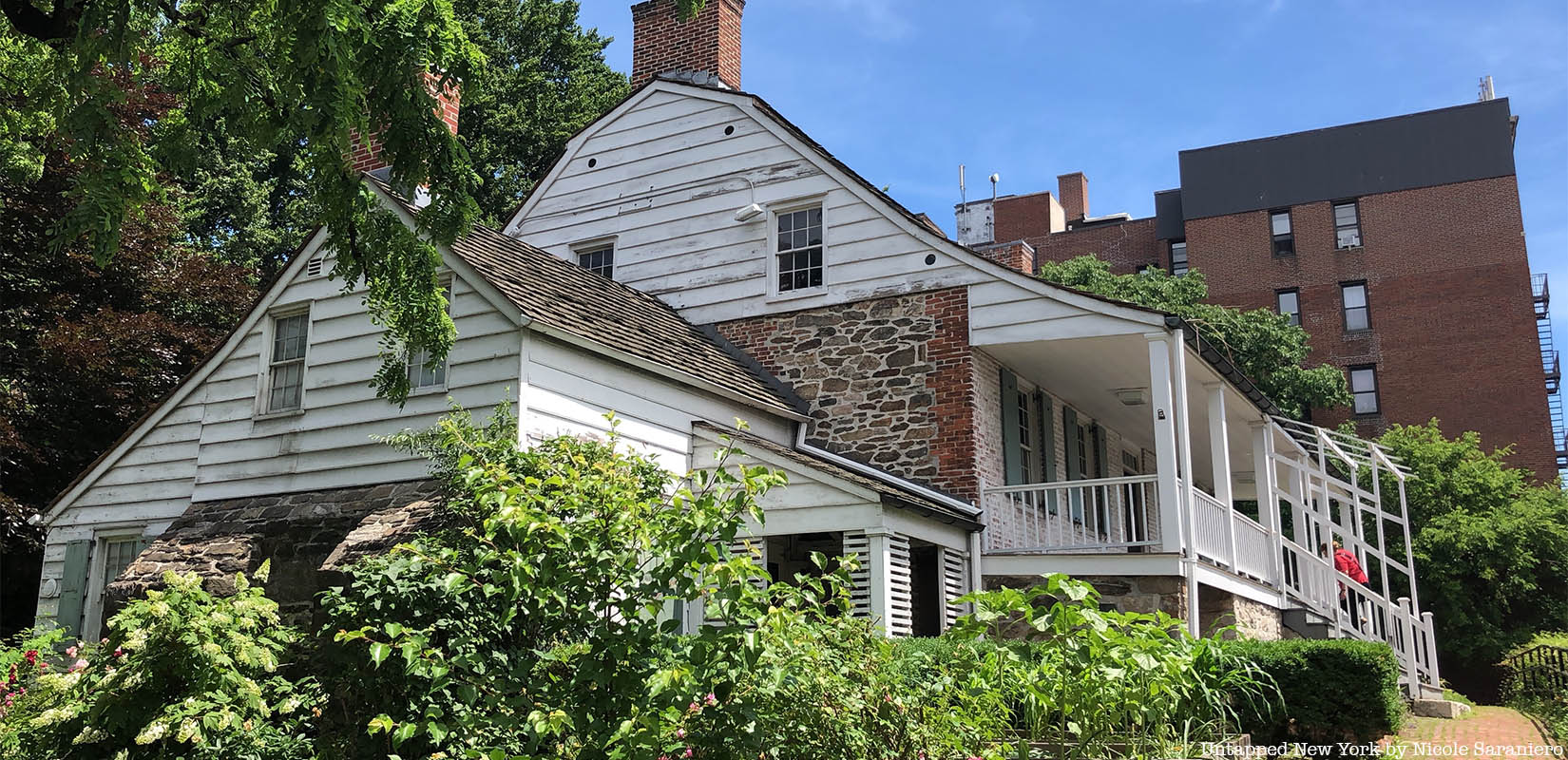2. Dyckman Farmhouse (1785)

The Dyckman Farmhouse is Manhattan’s oldest remaining farmhouse, built around 1785 in the Dutch Colonial style. The home is situated in a small park in Inwood on the corner of Broadway and 204th Street, and today it serves as a New York City Landmark and a National Historic Landmark. William Dyckman, who constructed the home, died just three years after constructing the farmhouse, yet his son Jacobus would later inherit the house along with his wife Hannah, his eleven children, and a number of slaves and free blacks. Today, Inwood is home to a forgotten slave cemetery believed to have the remains of a number of the Dyckman family’s slaves.
As part of the DyckmanDISCOVERED initiative, the museum has investigated the stories of those enslaved by the Dyckman family. In 1820, a free black woman, a free black boy, and an enslaved man inhabited the home, and it is estimated that seven or eight slaves lived in the house when it opened. It was believed that freed blacks and enslaved workers would have used the house’s Summer Kitchen, a small one-and-a-half-story building adjacent to the farmhouse. A free black woman named Hannah worked as a cook for the Dyckmans and was born between 1784 and 1794. Although it was believed that the home housed a number of enslaved workers, the only one fully identified was Francis Cudjoe, who was set free in 1809. An official document stated:
“Recorded for and at the request of Francis Cudjoe this 11th day of January 1809. Know all men by these present that I Jacobus Dyckman of the City of New York on consideration of motive of humanity and sum of one dollar to me in hand paid Do hereby manumit and set free a Black man named Francis Cudjoe aged about Forty years. In witness whereof I have hereunto subscribed had my name and affixed my seal this eleventh day of January Anno Dominis one thousand eight hundred and nine. Jacobus Dyckman, Witness Peter.”





